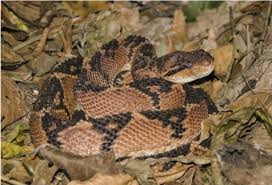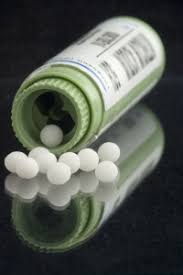
Looking over old books and journals to arrive at the truth of the muddled Lachesis affair revealed some rather interesting points. The documentary evidence alone concerning the name would puzzle a Philadelphia lawyer and drive any jury to disagreement. Mr. A. L. Ditmars, Curator of the Bronx Zoological Park, where the poison of the new Lachesis snake was extracted, testifies under oath, as follows:
“This is to certify that Messrs. Boericke & Runyon, homoeopathic chemists of New York City, delivered into my custody for verification and manipulation a serpent purporting to be a lance headed viper; that I made critical and complete examination of its genric charaetistics, and found the same to be a perfect living male specimen of a snake popularly known as the lance headed viper; technically embraced in the genus Lachesis; order, Ophidia; family, Crotalidae; Latin synonym, Trigonocephalus Lachesis; habitat, Northern Brazil; conforming to the serpent mentioned in the Homoeopathic Pharmacopoeia, and specified therein as Lachesis trigonocephalus; that I extracted from the said serpent a given quantity of venom, the whole of which venom I delivered on the 26th day of April, 1908, to the aforesaid Messrs. Boericke & Runyon.
As Mr. Ditmars is without prejudice in the matter, and is undoubtedly one of the best living authorities on snakes, this testimony determines the fact that the new snake is a specimen of the Lachesis trigonocephalus. The fact that all homoeopathic pharmacopoeias, and nearly all our text books, give that name for the Lachesis proved by Hering seems to demonstrate that the alleged new supply of Lachesis is genuine.
Hering himself seems to have been confused about the name In his Condensed Materia Medica he gives it as “Lachesis Surukuku.” In November, 1852, he contributed a paper to the November number of the North Americal Journal of Homoeopathy, then published by Willian Radde, and edited by Drs. Hering, Marcy and Metcalf. The title of the paper is “On Psorinum and its Chemical Rescue.” In this paper he discusses the events of his proving of Lachesis. He writes:
“On the 28th of July, 1828, I first received the poison of the Trigonocephalus lachesis, which I immediately triturated and commenced taking and administered to others in good health, and also to some patients. The results of these investigations were first transcribed on the 18th of June, 1830, and sent to Staph, who now printed y former communications and those subsequent researches. (Arch. X., 2, S. I und 24, 1831.) I mention this to show that neither I nor Staph was in too great hurry; we both took our time.”
This was written in the year 1852, and the proving referred to was made in, or about, the year 1828, so presumably in the intervening time the specimen of the snake furnishing the poison was presented to the Academy of Natural Sciences, philadelphia, and it is labeled by Hering: “:Lachesiss mutus. Surinam. Daud. Dr. Hering.” The snake so labelled is the one whose venom was proved, and so, regardless of names, we have the means of positively identifying any new Lachesis that my be offered. The other Lachesis snakes furnishing the remedy used to-day were identified by Dr. Hering; a comparison (they are all preserved in alcohol or glycerine) will show that they are of the same species, and, as Mr. Ditmars seems to be right, they are not Lachesis trigonocephalus. This name has been wrongly applied to them.
Thus it is that Lachesis mutus is the poison proved, and used for over half a century in Homoeopathy, yet in all that time it has been named Lachesis trigonocephalus, whereas the genuine Lachesis trigonocephalus is an unproved and therapeutically unknown remedy. This error will doubtless cause much confusion in the future, as it is universally incorporated in homoeopathic text-books and literature. We cannot say whose fault it was, but it is the duty of every homoeopathic writer and journal to do what lies in their power to correct it.
The whole matter may be summed up as follows: The two snakes are of a different species. The proved poison is Lachesis mutus. The unproved poison is Lachesis trigonocephalus. Since its introduction the former has erroneously borne the latter’s name.





Hi there,
We are just wondering if you would be interested in our Twitter growth service.
We have a network of over 3.4 million followers, and have worked in this industry since 2009.
If you would like more information and would like to see some of our previous work, just reply back and we can discuss further.
Kind Regards,
Lucy
Hi there,
We run an Instagram growth service, which increases your number of followers both safely and practically.
– We guarantee to gain you 400-1000+ followers per month.
– People follow you because they are interested in you, increasing likes, comments and interaction.
– All actions are made manually by our team. We do not use any ‘bots’.
The price is just $60 (USD) per month, and we can start immediately.
If you’d like to see some of our previous work, let me know, and we can discuss it further.
Kind Regards,
Megan
Hi there,
We run an Instagram growth service, which increases your number of followers both safely and practically.
– Guaranteed: We guarantee to gain you 400-1200+ followers per month.
– Real, human followers: People follow you because they are interested in your business or niche.
– Safe: All actions are made manually. We do not use any bots.
The price is just $60 (USD) per month, and we can start immediately.
If you are interested, and would like to see some of our previous work, let me know and we can discuss further.
Kind Regards,
Megan